What Animals Were In North America 1000 Years Ago
x extinct giants that once roamed N America
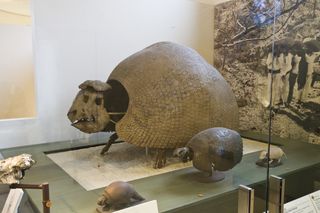
Until the finish of the last ice age, American cheetahs, enormous armadillolike creatures and giant sloths called North America home. But it's long puzzled scientists why these animals and other megafauna — creatures heavier than 100 pounds (45 kilograms) — went extinct about 10,000 years agone.
Rapid warming periods chosen interstadials and, to a lesser degree, ice-age people who hunted animals are responsible for the disappearance of the continent'south megafauna, according to a study published in July in the journal Science. Other studies have placed more blame on humans, and some researchers say many factors are to arraign.
Both research and the debate surrounding the reasons for the extinction of these animals volition undeniably go on. In the meantime, researchers go along to discover fossils of these massive creatures. Here's a expect at 10 extinct animals from the last Northward American ice historic period, and what scientists know about their lives.
Related: Image gallery: 25 amazing ancient beasts
1. North American horses
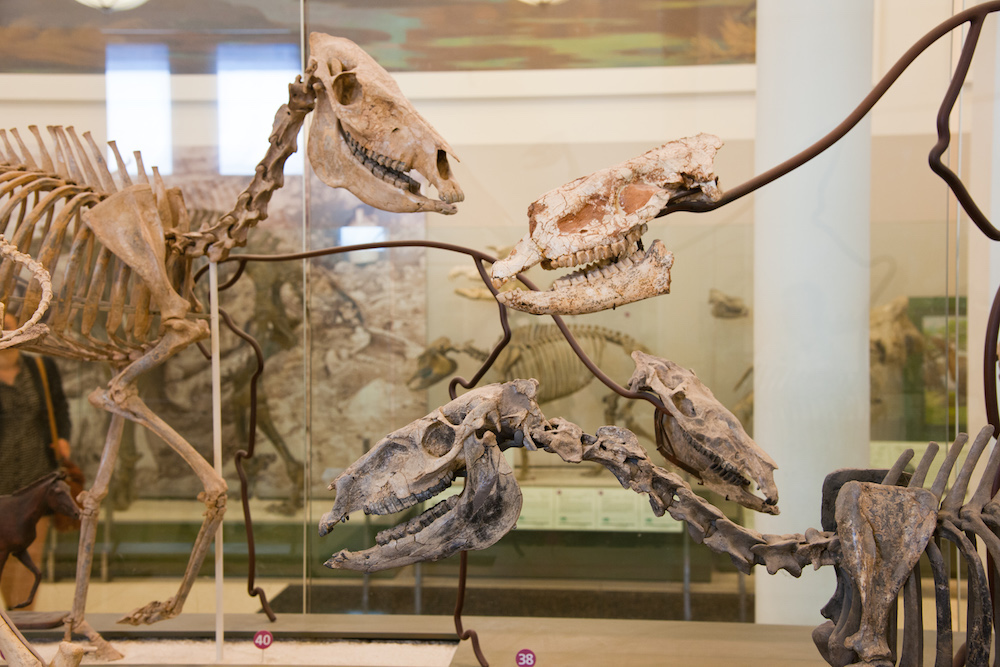
European settlers introduced horses when they landed in the New Globe. But petty did they know the thunderous sound of ancient horses' hooves one time covered the continent.
Ancient horses lived in North America from nigh 50 1000000 to 11,000 years ago, when they went extinct at the cease of the concluding ice age, said Ross MacPhee, a curator of mammalogy at the American Museum of Natural History in New York City.
"Ane of the great peculiarities of this extinction is that they died out in North America, yet managed to survive in Eurasia and Africa, which is why we all the same take horses and their relatives — donkeys and asses — today," MacPhee said.
ii. Glyptodon

Glyptodon looked similar a supersize version of its distant relative, the armadillo. Like its cousin, Glyptodon protected itself with a beat out fabricated of bony plates.
The armored, 1-ton animal likely traveled to North America from South America via the Isthmus of Panama, a land bridge that connects the 2 Americas, MacPhee told Alive Science.
After reaching North America about 2 million years ago, Glyptodon prospered in what is at present coastal Texas and Florida, he said. But the herbivorous critter has been extinct for ten,000 years, MacPhee said.
3. Mastodons

Mastodons (Mammut) entered North America about xv million years ago, traveling over the Bering Strait land bridge, long before their relative, the mammoth, according to the Yukon Beringia Interpretive Centre in Canada.
They were also more primitive than their mammoth cousins. For instance, mastodons had less-circuitous teeth — cone-shaped cusps on their molars — that helped them crisis on the leaves, twigs and branches of deciduous and conifer trees. They also ate wetland plants that weren't full of abrasive material constitute in terrestrial plants, MacPhee said.
Related: Mammoth or mastodon: What'due south the difference?
Mastodons are also a fleck shorter than mammoths, but both species reached heights betwixt vii and fourteen anxiety (two to 4 meters), according to a 2013 Live Science piece. And both had shaggy coats that protected them from the cold.
However, mastodons had long, curved tusks that measured up to 16 anxiety (4.9 meters) long. Mammoths, in dissimilarity, sported curlier tusks.
4. Mammoths
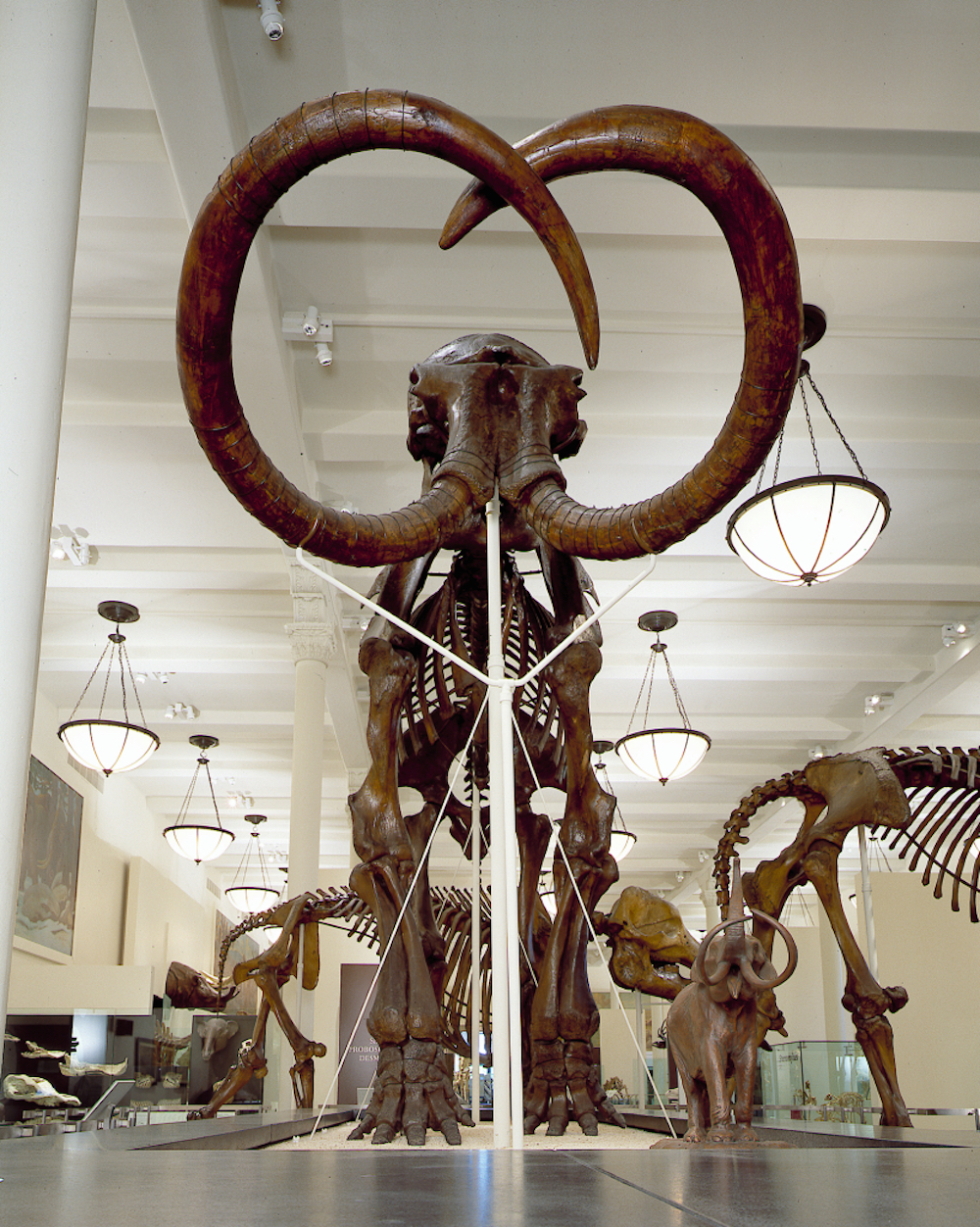
Mammoths (Mammuthus) traveled to North America nearly 1.7 million to 1.ii meg years agone, according to the San Diego Zoo. Although there are some anatomical differences between mammoths and mastodons, both are members of the proboscidean family. Mammoths had fatty humps on their backs that probable provided them with nutrients and warmth during icy periods, according to a February 2013 slice in Live Science.
Mammoths also had flat, ridged molars — a construction that helped them slice through gristly vegetation, unlike the cusped teeth of the mastodon, MacPhee said.
Related: Image gallery: Stunning mammoth unearthed
In addition, mammoths are more closely related to modern elephants, especially the Asian elephant, than mastodon, MacPhee said.
5. Short-faced bear
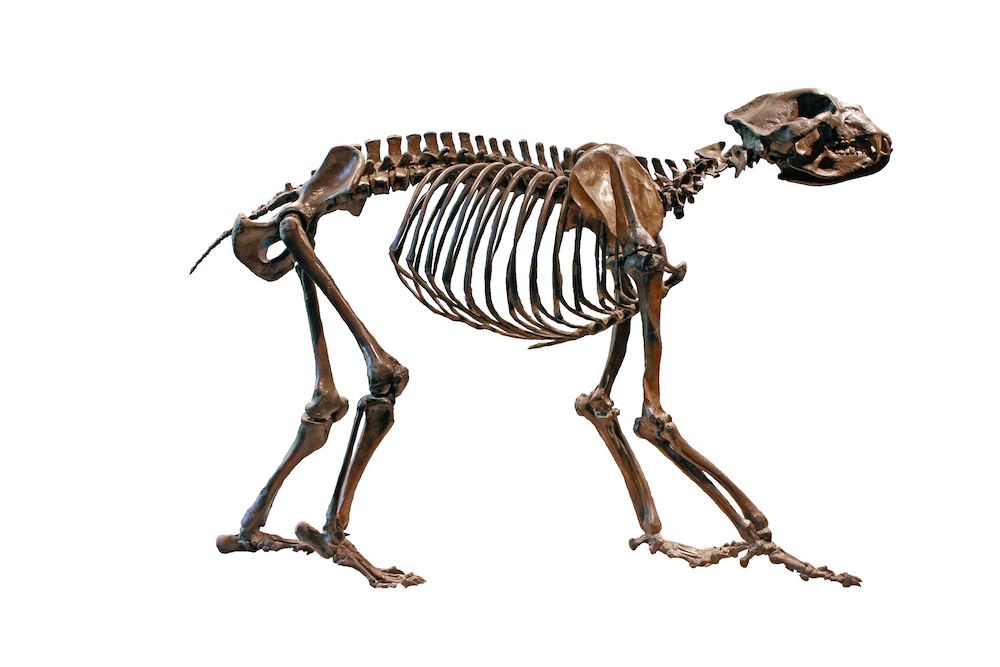
Despite its proper name, this enormous bear didn't really have a short face up. Simply in comparison to its long artillery and legs, it looked like information technology did, MacPhee said. He compared information technology to a grizzly bear on stilts, as its limbs were at to the lowest degree 1-tertiary longer than those of a modern grizzly.
"It had very long forelimbs and hind limbs," which likely helped it run at loftier speeds, he said. Modernistic bears are capable of short bursts of speed, "but they're not runners," he said.
Even so, the conduct's long limbs however perplex scientists.
"One idea is that short-faced bears ran downwardly their prey like cats do, but for a whole number of reasons, that is no longer the preferred argument," he said. "Nosotros don't know why they were adapted to having long legs."
Now, researchers are looking for clues that may reveal whether the carnivore was a hunter, a scavenger or both, MacPhee said.
6. Dire wolf
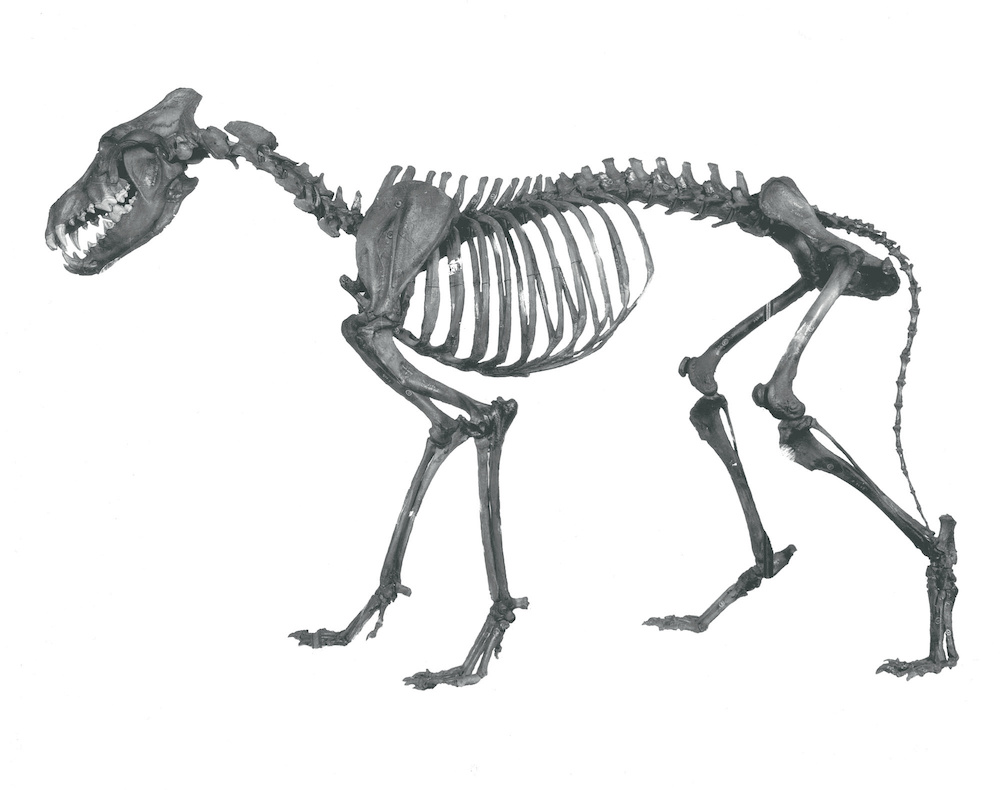
Dire wolves went extinct about xiii,000 years ago, but their bones are plentiful in California's La Brea Tar Pits and Wyoming's Natural Trap Cave. These skeletons show that dire wolves (Canis dirus) were about 25% heavier than modernistic greyness wolves (Canis lupus), weighing between 130 and 150 pounds (59 to 68 kg), according to the Florida Museum of Natural History.
All the same, the dire wolf had shorter limbs than C. lupus, suggesting information technology wouldn't have won whatsoever races against its younger relative, the museum reported.
On the canid family tree, dire wolves divide off from wolves about 5.7 one thousand thousand years ago, making them a distant relative of today'south wolves, according to 2021 written report published in the journal Nature (opens in new tab). Unlike other canid species that migrated betwixt Eurasia and Northward America, dire wolves evolved solely in Northward America, and they didn't interbreed with coyotes or gray wolves, the study found.
vii. American cheetah
The American cheetah stood a little taller than the modernistic cheetah, with a shoulder height of nigh 2.75 feet (0.85 meters) and a weight of about 156 pounds (lxx kg). However, the American cheetah probably wasn't as fast: It had slightly shorter legs, which likely made it a improve climber than a runner, co-ordinate to the zoo.
Researchers named information technology Miracinonyx inexpectatus — mira means "wonderful" in Latin, and acinonyx and onyx come up from the Greek words for "no movement," (based on the simulated perception that cheetahs don't accept retractable claws) and claw, respectively, the zoo said.Inexpectatus is Latin for "unexpected," giving the big cat a name that translates roughly into "wonderful unexpected cheetah with immobile claws." [Life of a Big Cat: See Stunning Photos of Cheetahs]
Researchers dated the get-go known M. inexpectatus fossil, found in modern-day Texas, to the Pliocene, between 3.2 million and 2.5 million years agone, co-ordinate to the zoo. They went extinct about 12,000 years ago.
viii. Footing sloth
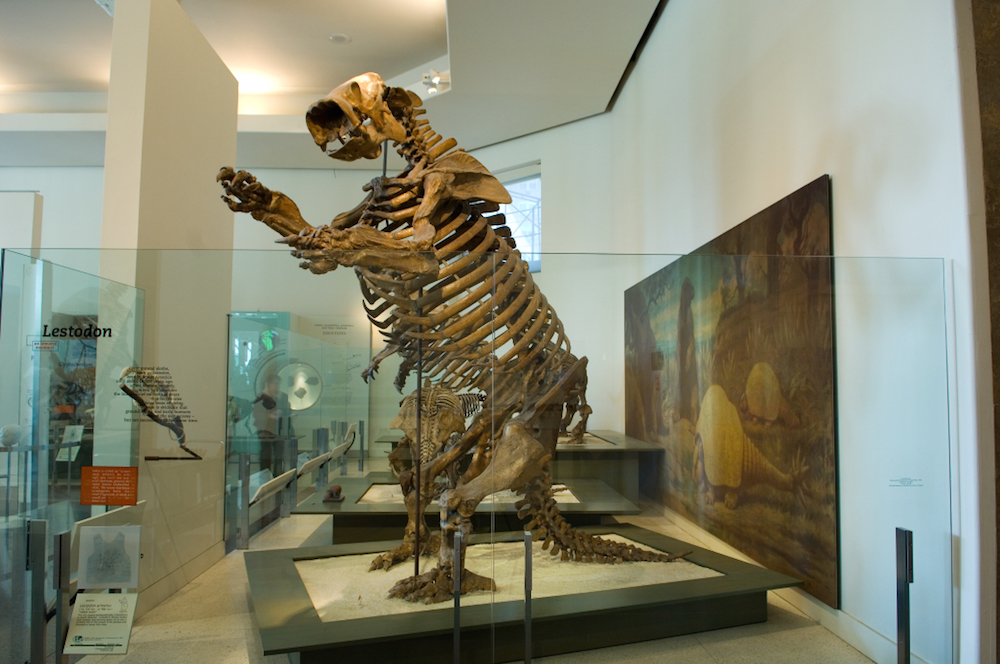
When President Thomas Jefferson learned most a strange hook fossil found in Ohio, he asked explorers Meriwether Lewis and William Clark to search for behemothic lions during their western trek to the Pacific. The claw, yet, didn't belong to a lion. It was part of Megalonyx, an extinct ground sloth, MacPhee said.
Related: Elevation x intrepid explorers
Like Glyptodon, Megalonyx traveled to North America from South America. In fact, ground-sloth fossils indicate that these animals began living in South America about 35 one thousand thousand years ago, co-ordinate to the zoo.
Researchers uncovered a four.8-meg-year-old Megalonyx fossil in Mexico, and later, specimens were found in present-day America, specially in areas that used to have forests, lakes and rivers. During warmer periods, chosen interglacials, Megalonyx made it as far northward as the Yukon and Alaska, MacPhee said.
"But when information technology got cold, the sloth really wasn't built for that type of matter, and so it headed southward," he said.
Megalonyx jeffersonii stood about 9.8 feet (3 thou) alpine and weighed an estimated 2,205 pounds (1,000 kg). It survived until well-nigh 11,000 years ago, the zoo reported.
9. Giant beaver
The giant beaver (Castoroides) is more often than not known from its fossils in the Bully Lakes region, which is "mayhap no surprise for a beaver," MacPhee said. Simply other fossil finds show the giant lived as far south equally S Carolina and in the American Northeast.
Like Megalonyx, the behemothic beaver ventured into Alaska and the Yukon during the interglacial periods, simply retreated south when temperatures dropped, MacPhee said.
Castoroides was enormous for a beaver — it weighed upward to 125 pounds (57 kg), much larger than the roughly 44-lb. (twenty-kg) Northward American beaver (Brush canadensis) that exists today. Interestingly, modern beaver remains are found in the same deposits every bit those of their ancient relatives, suggesting they had similar lifestyles, MacPhee said.
10. Camels
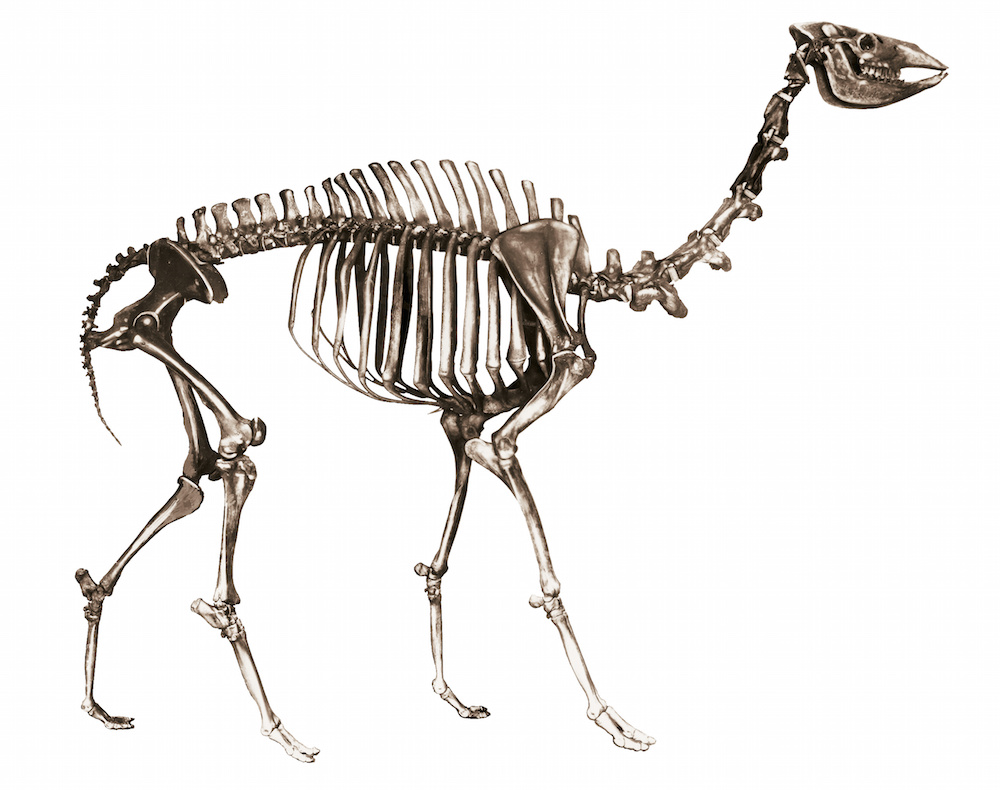
Camels that once roamed N America are called Camelops, Latin for "yesterday's camel." However, Camelops is more closely related to llamas than to today's camels, the zoo reported.
Camelops and its ancestors were no strangers to the states. Fossils evidence that the camelid family arose in North America during the Eocene period, about 45 million years ago, the zoo said. It lived in open spaces and dry areas, but it's unclear whether it could conserve h2o as modern camels practice, MacPhee said.
Camelops stood almost 7 feet alpine (2.2 k) at its shoulder, weighed up to ane,764 pounds (800 kg) and had a short tail.
Editor'southward notation: Updated on July 16, 2021 to include new information in the dire wolf section. Originally published on Live Science.
Source: https://www.livescience.com/51793-extinct-ice-age-megafauna.html
Posted by: johnsonsniters.blogspot.com

0 Response to "What Animals Were In North America 1000 Years Ago"
Post a Comment